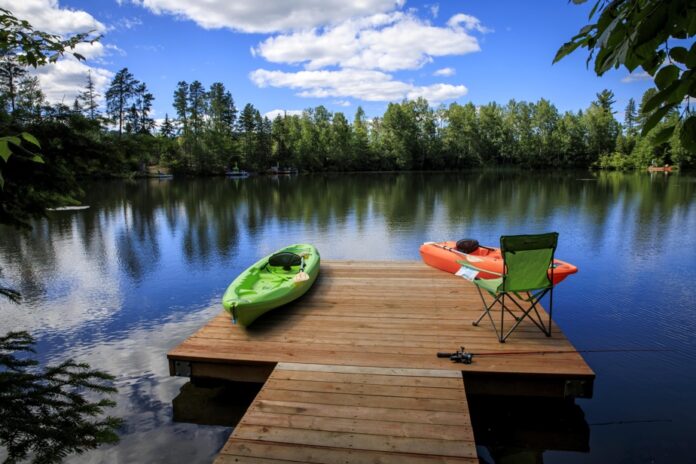Elizabeth*, 52, plans to retire at age 60 from her job as a full-time manager. She is also a single mother of two teenagers aged 16 and 18 whose living costs (residence, schooling, etc.) are cost-shared with their father.
Without a pension plan, his job brings him $100,000 a year. Added to this is approximately $30,000 in investment income (dividends, interest and gains received) from a portfolio of financial assets in a non-registered account valued at $700,000.
This important portfolio stems from a significant inheritance from his parents. This bequest also allowed Elizabeth to fill her registered savings accounts (RRSP, TFSA, RESP for the two teenagers) with the maximum allowable contributions over the years.
These combined assets total $615,000, bringing Elizabeth’s total financial assets to approximately $1.34 million.
On the side of his non-financial assets, these are two real estate properties free of mortgage debt: his main residence in town, a condo valued at $560,000 on the property roll, as well as a lakeside chalet valued at $600. $000.
As for Elizabeth’s budget, these years it is around $92,000 a year, including $58,000 related to family lifestyle and residential costs, and some $34,000 related to savings contributions in RRSP, TFSA and RESP children.
After retirement, in eight years, Elizabeth expects to maintain her personal lifestyle at around $58,000 a year, excluding whether or not to maintain contributions in registered savings accounts.
However, Elizabeth foresees the addition in ten years of $30,000 in annualized disbursements related to the cost of owning and maintaining the family cottage. This surcharge will begin upon the expiry of a fiduciary agreement put in place when the chalet was bequeathed to the parental inheritance.
With this addition, the lifestyle disbursements of Elizabeth and her loved ones would amount to approximately $88,000 per year in the second year of her retirement, which began at age 60.
– in investment savings (non-registered): $700,000 – in retirement savings (RRSP): $400,000 – in education savings (RESP): $125,000 – in tax-free savings (TFSA): 90,000 $– in current savings: $30,000
– principal residence: $560,000 – waterfront cottage: $600,000
– no mortgage – no consumer debt
($100,000 employment, $30,000 investments)
($18,000 related to principal residence, $40,000 related to lifestyle, $34,000 related to RRSP, TFSA and RESP contributions)
In this context, Elizabeth is looking for advice to financially validate her plan to retire from work on her 60th birthday.
In the event of an unfavorable finding, how can the financial readiness of this project be enhanced over the next eight years?
But in the event of a favorable finding, how to optimize the sequence of disbursement of financial assets – in registered or non-registered accounts – during the first years of retirement at age 60, and before the start of public pensions (Quebec QPP, federal PSV) at 65 years ?
Elizabeth’s situation was submitted for analysis and advice to Daniel Lanteigne, who is a financial planner and senior partner at the firm Reverber Financial Strategies, based in Quebec.
Mr. Lanteigne is also a former Chairman of the Board of Directors of the Institut québécois de planification financière (IQPF).
From the outset, Daniel Lanteigne notes that the current balance sheet of Elizabeth’s financial health, with a net worth (value of assets less liabilities) of around 2.5 million, looks favorable for her project. retirement at age 60.
However, he has reservations about the longevity and sufficiency of Elizabeth’s sources of retirement income when she reaches old age. And after drawing on his assets for two decades to support his planned lifestyle of $80,000 a year, in the absence of employment income or a pension plan.
“Considering that she will cease to receive employment income at age 60, and that the disbursements of financial assets will then be her main source of income in addition to public pensions [Quebec QPP and federal PSV at age 65], the resources Elizabeth’s finances would no longer be enough to cover her predictable lifestyle from the age of 83,” said Daniel Lanteigne.
That said, “Elizabeth’s current good financial health allows her to direct her spending and saving choices over the next few years in order to achieve her plans for early retirement.”
What choices are these?
As a first proposal, Daniel Lanteigne suggests that Elizabeth consider postponing her plan to retire from work from age 60 to 65.
“By working five more years, it would increase his income and his ability to save for retirement so that he could cover his lifestyle at least until he was 87 years old. Also, Elizabeth would have more time to decide whether to resell either of her two properties – the condo or the chalet – in order to replenish her current cash flow while enhancing the value of a future estate bequest,” says Mr. Lanteigne.
As a second proposition, he suggests that Elizabeth consider reselling her condo when she retires from work at age 60. She would thus benefit from a non-taxable gain on the resale of her principal residence in order to enhance her financial assets and available cash before the start of public pensions at age 65.
“This resale of the condo could be done in eight years, around the year 2031, when her employment income will end, but her children will probably be out of university, and still partially financially independent. says Daniel Lanteigne.
In addition to boosting her cash flow, reselling the condo in eight years would allow Elizabeth to cut some $20,000 in residential costs from her annual lifestyle budget when she retires at age 60.
And by lowering her lifestyle expenses, Elizabeth would improve her prospects for financial longevity until a very old age, with the possibility of a surplus of assets to enhance a possible inheritance.
Planning a project that requires wise use of your money? Do you have financial problems?















